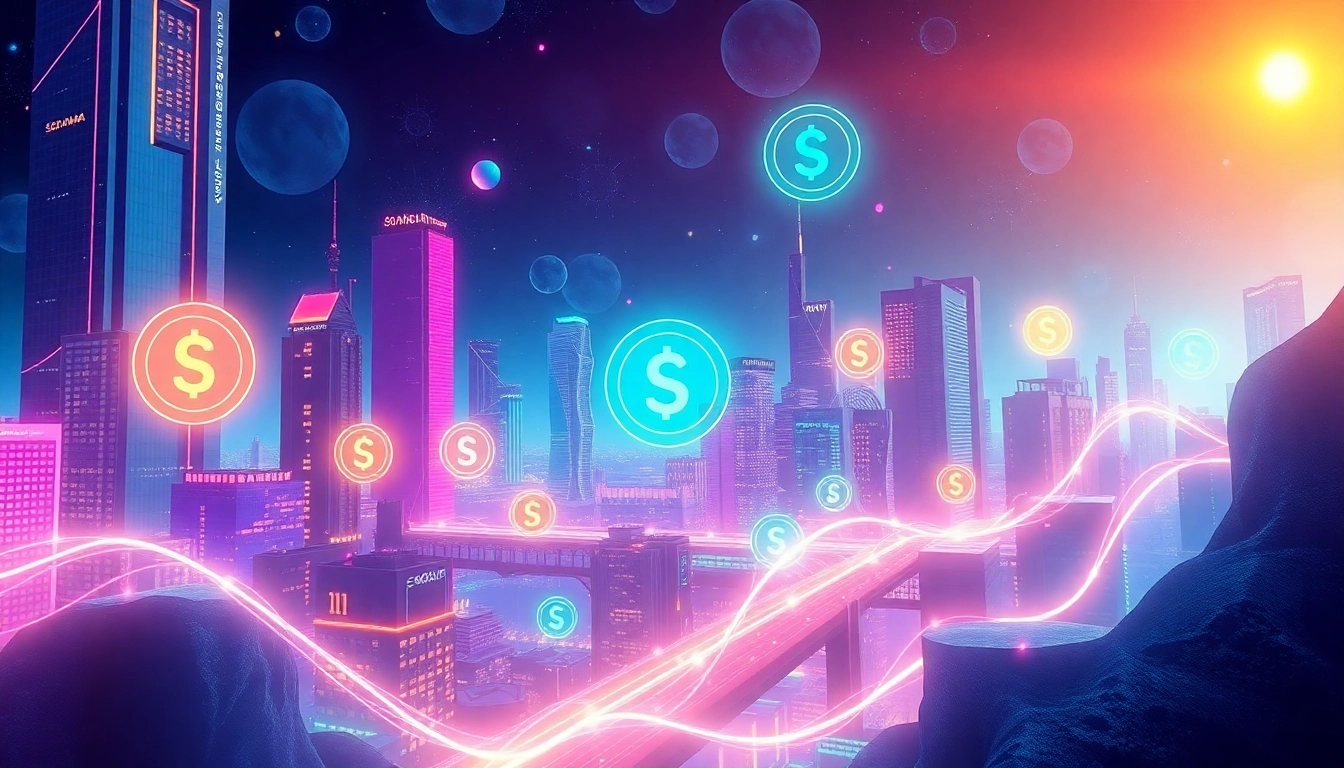Understanding the Intersection of Meme Coins, GambleFi, and Scarcity Tokens
The cryptosphere is constantly evolving, seamlessly blending innovation with entertainment. An exemplary case is how meme coins are diversifying into complex ecosystems that incorporate elements like GambleFi, community-driven utility, and scarcity dynamics. Among these, the Solana Scarcity Token stands out as a poignant example of a scarcity-driven digital asset that leverages community engagement, utility, and scarcity principles to redefine value in the crypto space.
While many tokens focus solely on hype and volatility, the integration of scarcity, utility, and innovative earning mechanics offers investors a more sustainable path to growth. This not only appeals to speculative traders but also to users seeking long-term value and active participation in shaping the ecosystem.
Core Principles of Scarcity Tokens in the Crypto Ecosystem
What Makes Scarcity Tokens Unique?
Scarcity tokens, like the Solana Scarcity Token, are designed around a fundamental economic principle: limited supply induces value. Unlike inflationary tokens that continually mint new coins, scarcity tokens have a predefined maximum supply or employ mechanisms such as token burning to ensure supply diminishes over time, enhancing perceived value.
For instance, projects inspired by top-tier systems like Binance and Ethereum have implemented deflationary mechanisms — burning a portion of tokens after each transaction to reduce circulating supply proactively. This creates a natural upward pressure on price and incentivizes holding.
Market Dynamics and the Power of Rarity
Scarcity influences market behavior dramatically. When a token’s supply decreases or remains limited, demand tends to increase as investors recognize its potential for appreciation. Such dynamics are especially potent when combined with active community engagement, as seen with meme and utility-focused tokens like Solana Scarcity Token.
Examples of scarcity in action include fluctuating price charts, trading volume spikes, and social media hype—fueling a cycle of increased demand driven by perceived rarity and utility.
Strategic Approaches to Investing in Scarcity Tokens
Analyzing Market Trends and Price Movements
Successful investment in scarcity tokens hinges on real-time market analytics. By monitoring platforms like CoinMarketCap and CoinGecko, investors can gauge market cap, trading volume, and price volatility. Recognizing patterns—such as volume surges during token burns or scarcity announcements—provides insights into future price trajectories.
Using technical indicators and social sentiment analysis enhances decision-making. For example, a spike in social media engagement around token burn events or community updates often signals a potential bullish move.
Long-Term Strategies: Holding and HODLing
A common approach is to acquire scarce tokens during presales or early stages, then hold them long-term, anticipating that scarcity-driven appreciation propels their value upward. This strategy relies on the premise that decreasing circulating supply, combined with increasing community utility, will create a favorable environment for price growth.
Community Engagement and Utility-Driven Gains
Active participation in community activities amplifies earning potential. Many scarcity tokens incentivize users to promote, create content, or stake tokens—thereby increasing demand and visibility. For example, platforms like Angry Pepe Fork incentivize community involvement through rewards, staking, and GambleFi gaming, which synergistically drives scarcity and demand.
Technical Foundations and Security in Scarcity Token Projects
Tokenomics and Supply Mechanics
Understanding tokenomics is vital. Typically, scarcity tokens allocate a significant portion of supply for marketing, community rewards, and staking incentives, while a locked treasury ensures project stability. For instance, a supply cap like 1.9 billion tokens with mechanisms for burning and redistribution creates a deflationary environment.
Additionally, transparent token distribution, detailed smart contract audit reports, and clear governance frameworks foster trust among investors and community members.
Security and Auditing Practices
Token projects like Solana Scarcity Token employ thorough security audits from reputable firms to verify contract integrity and safeguard against exploits. Regular audits, ongoing monitoring, and community transparency are best practices to maintain network security and project credibility.
Market Access via Established Platforms
Scarcity tokens should be listed on reputable exchanges such as MEXC, Binance, or decentralized platforms like Magic Eden and Solflare. Wide accessibility and liquidity are crucial for user engagement and price stability.
Utility and Ecosystem Expansion of Scarcity Tokens
Leveraging Scarcity in DeFi and NFTs
Scarcity tokens can be embedded into DeFi protocols, enabling staking, liquidity provision, and yield farming, which further reduces circulating supply and enhances utility. NFT collaborations with scarcity attributes also reinforce token value through rarity and exclusivity.
Governance and Community Power
Community governance mechanisms empower token holders to influence project direction, from treasury management to feature development, effectively making scarcity tokens not just speculative assets but active governance tools.
Future Ecosystem Growth
Innovations like cross-chain bridges will enable scarcity tokens to operate seamlessly across multiple blockchains, increasing utility and adoption. Developer-driven projects and strategic partnerships will further solidify the long-term value proposition.
Getting Started with Scarcity Tokens: Practical Steps
Choosing Wallets and Platforms
Effective participation begins with selecting compatible wallets such as MetaMask, Trust Wallet, or Solflare. These non-custodial wallets support Ethereum, Solana, and other chains, facilitating seamless buying, staking, and trading.
Purchase Guide and Storage Tips
To acquire scarcity tokens like Solana Scarcity Token, users typically swap ETH, BNB, or USDT on decentralized exchanges — ensuring the wallet supports these assets. Once bought, store tokens securely offline or in trusted wallets to prevent unauthorized access.
Staking and Passive Income Opportunities
Staking allows holders to lock tokens in smart contracts, earning additional tokens as rewards. Platforms often incentivize staking during presales or post-launch phases, with APYs that diminish as more tokens are staked—the more you stake, the better your long-term gains.

